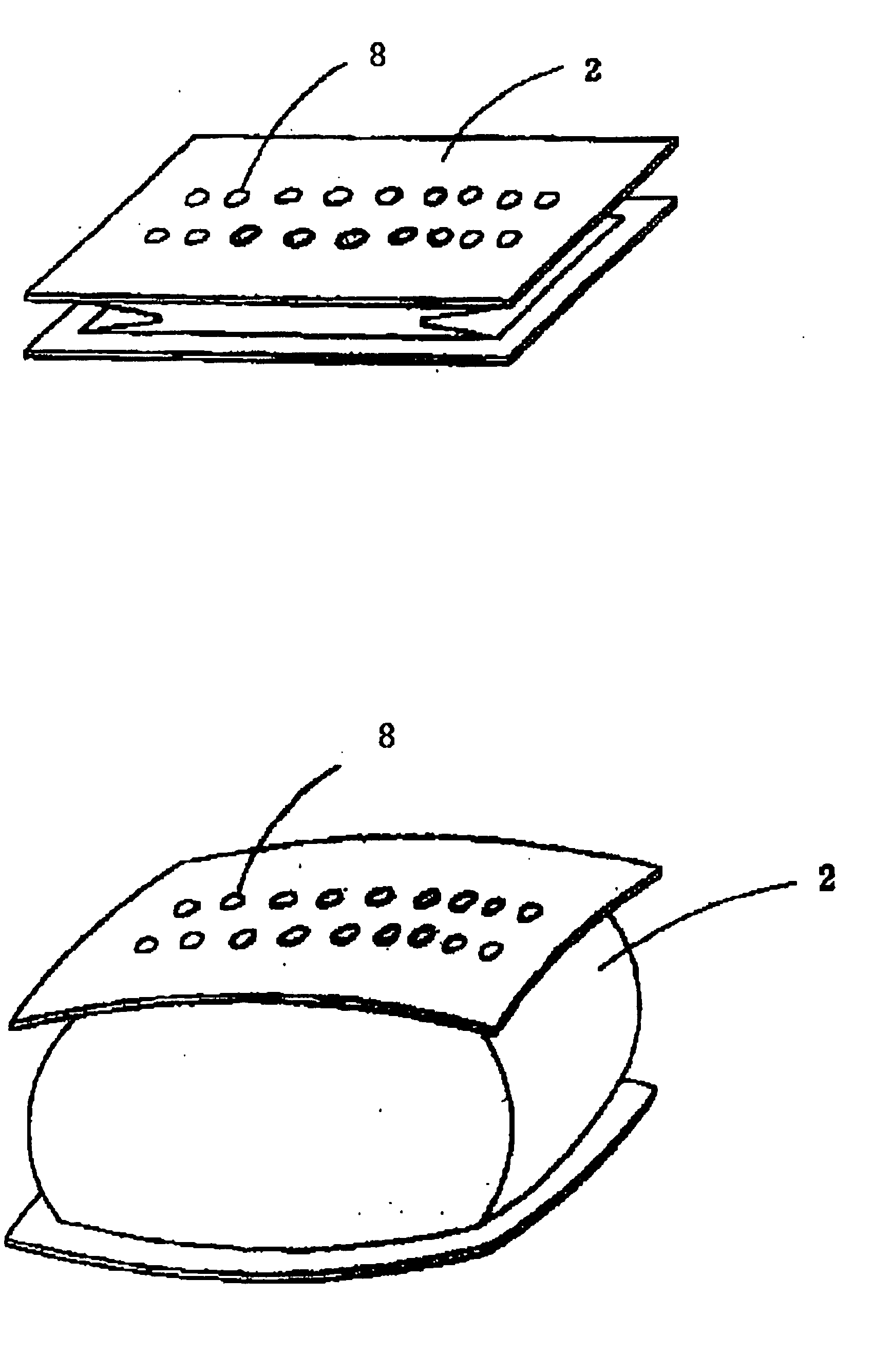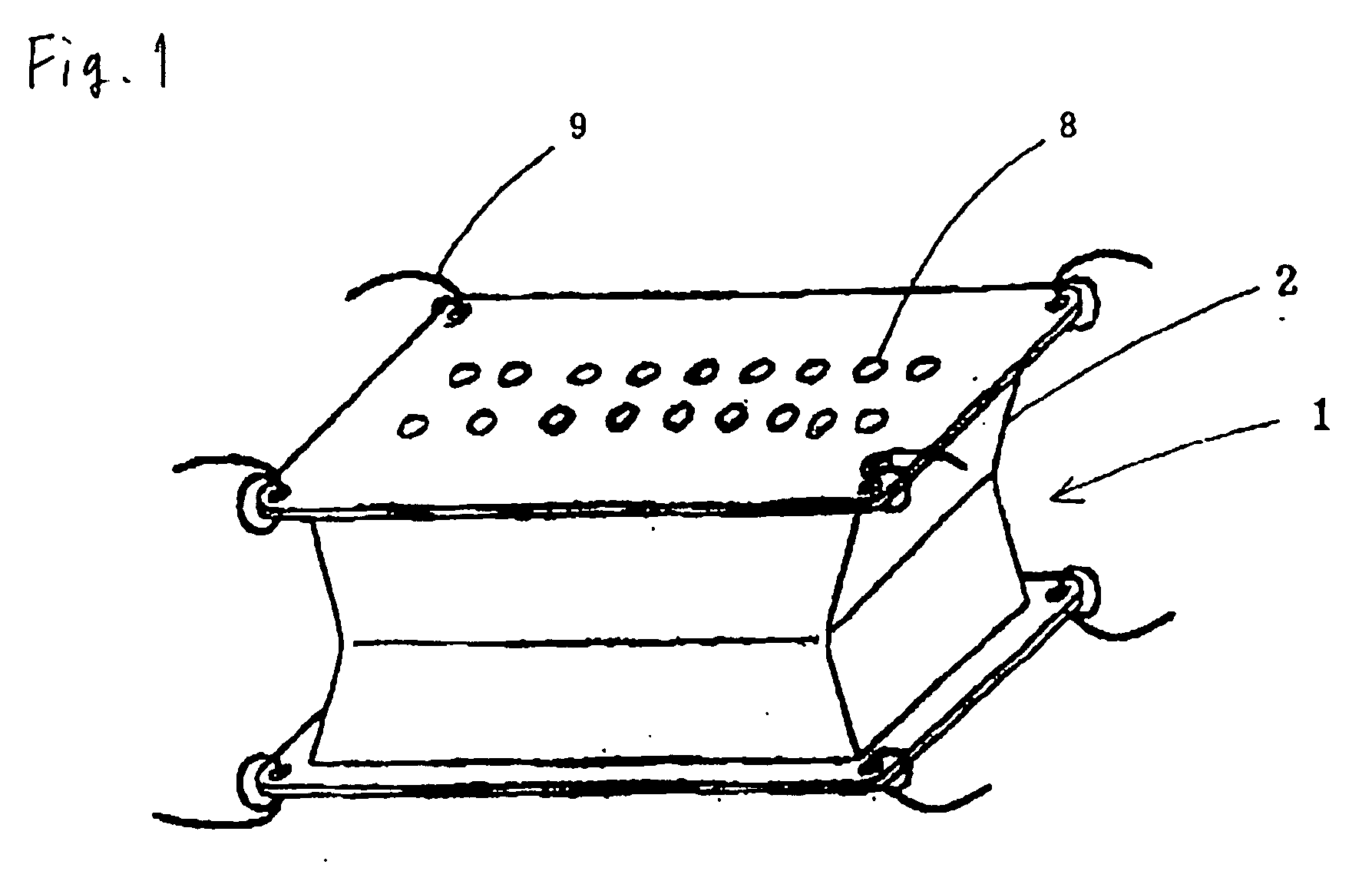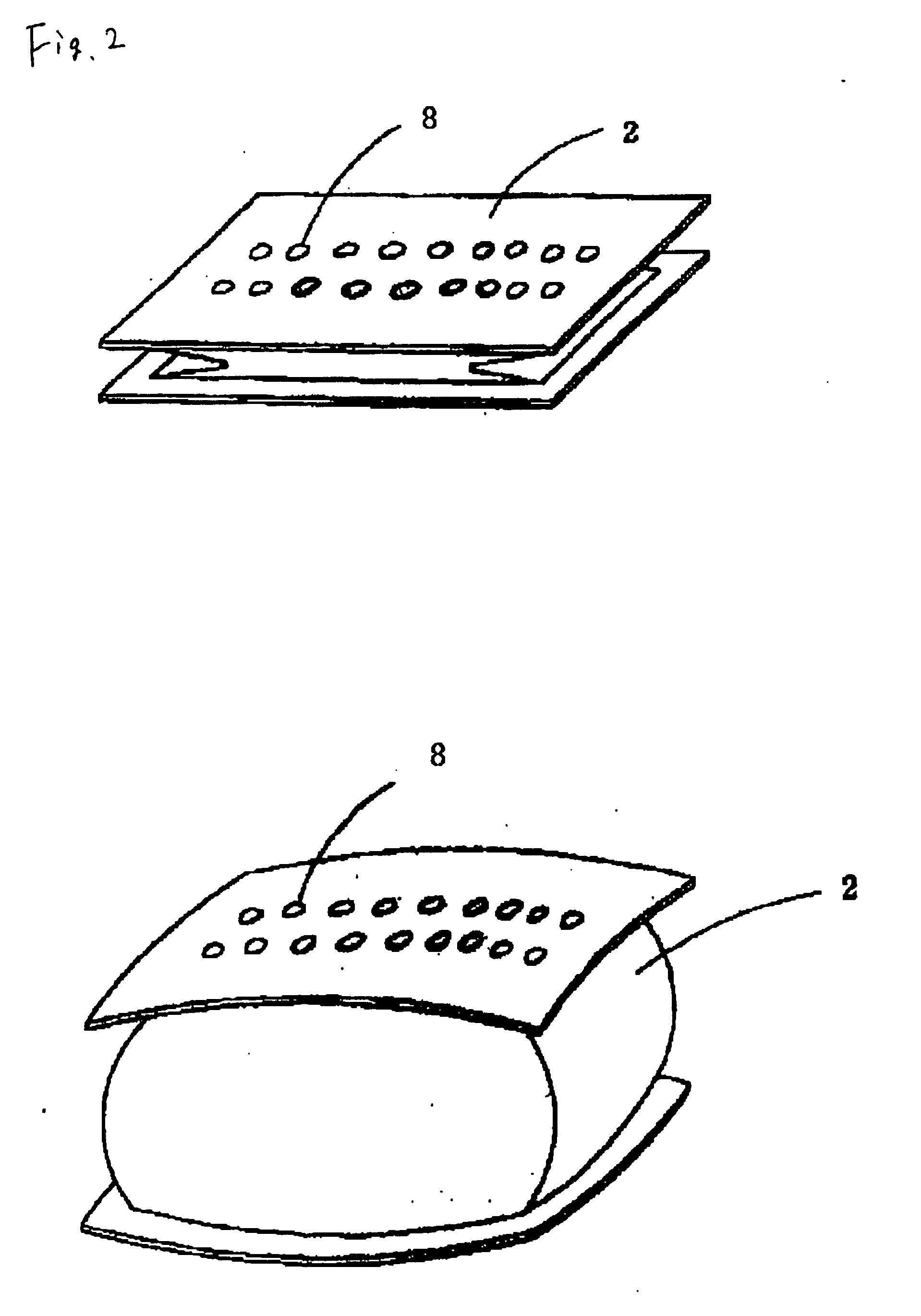Water-swellable waterproof sealant
a waterproof sealant and water-swelling technology, applied in coastline protection, cable junctions, cable terminations, etc., can solve the problems of water leakage, collapse of stacked bags, etc., and achieve the effect of quick swelling with water and easy storage and transportation
- Summary
- Abstract
- Description
- Claims
- Application Information
AI Technical Summary
Benefits of technology
Problems solved by technology
Method used
Image
Examples
manufacture example 1
[0132] To a 1 liter beaker were added 230 g of acrylic acid, 133 g of 48% aqueous sodium hydroxide solution, 1.0 g pentaerythritol triallyl ether and 636 g of water, which was cooled to 10° C. The solution was placed in an adiabatic bath, into which nitrogen was introduced to reduce the dissolved oxygen in the solution to 0.1 ppm (measured by Dissolved Oxygen Meter DO220PB from Orient Electric Co. Ltd.) and then 0.023 g of 35% hydrogen peroxide solution, 0.00575 g of L-ascorbic acid and 0.23 g of potassium persulfate were added. Thirty minutes after said addition, polymerization started to reach the maximum temperature of 72° C. after roughly two hours. The solution was then aged at this temperature for 5 hours to complete the polymerization. The polymer obtained is a water containing gel product. The polymer obtained was cut into small pieces by a kneader (trade name, BENCH K NEADER PNV-1 from Irie Shokai Co. Ltd.; rotating speed, 70 ppm) for roughly two hours, to which 35.5 g of a...
manufacture example 2
[0133] After the polymer in Manufacture Example 1 was dried and crushed, 2.5 g of finely crushed silica (Silysia® 250 from Fuji Silyisia Chemical Co. Ltd., average particle diameter 2.7 μm) is added and mixed with the polymer uniformly by a Nautor mixer to yield the water-absorbent resin A (ii) with the average particle diameter of 370 μm, the rate of swelling of 21 seconds, an amount of the water absorbed of 550 g / g, a ratio of the water-retention to the water-absorbency of 0.78, the gel elastic modulus of 5×103 N / m2, a content of the water soluble components of 7% by mass, an amount of the residual water soluble monomer of 85 ppm and the blocking resistance to moisture of 3%.
manufacture example 3
[0134] To a 1 liter beaker were added 0.29 g (0.04 mole) of acrylic acid, 0.33 g of a 48% aqueous sodium hydroxide solution, 278.4 g (1.96 mole) of a 50% aqueous acrylamide solution and 278 g of water, which was cooled to 5° C. The solution was placed in an adiabatic bath, into which nitrogen was introduced to reduce the dissolved oxygen in the solution to 0.1 ppm and then 0.0001 g of a 35% hydrogen peroxide solution, 0.00005 g of L-ascorbic acid and 0.025 g 4,4′-azobis(4-cyanovaleric acid) were added. Thirty minutes after addition, polymerization started to reach the maximum temperature of 75° C. after roughly five hours to complete the polymerization to yield a water containing gel polymer.
[0135] The polymer obtained was cut into small pieces by a meat chopper, then dried in a band drier (permeation dryer from Inoue Metal Co. Ltd.) at 120° C. for 1 hour and crushed to yield a dry powder of the non-crosslinked polymer with an average particle diameter of 500 μm. One hundred grams ...
PUM
 Login to View More
Login to View More Abstract
Description
Claims
Application Information
 Login to View More
Login to View More - R&D
- Intellectual Property
- Life Sciences
- Materials
- Tech Scout
- Unparalleled Data Quality
- Higher Quality Content
- 60% Fewer Hallucinations
Browse by: Latest US Patents, China's latest patents, Technical Efficacy Thesaurus, Application Domain, Technology Topic, Popular Technical Reports.
© 2025 PatSnap. All rights reserved.Legal|Privacy policy|Modern Slavery Act Transparency Statement|Sitemap|About US| Contact US: help@patsnap.com



